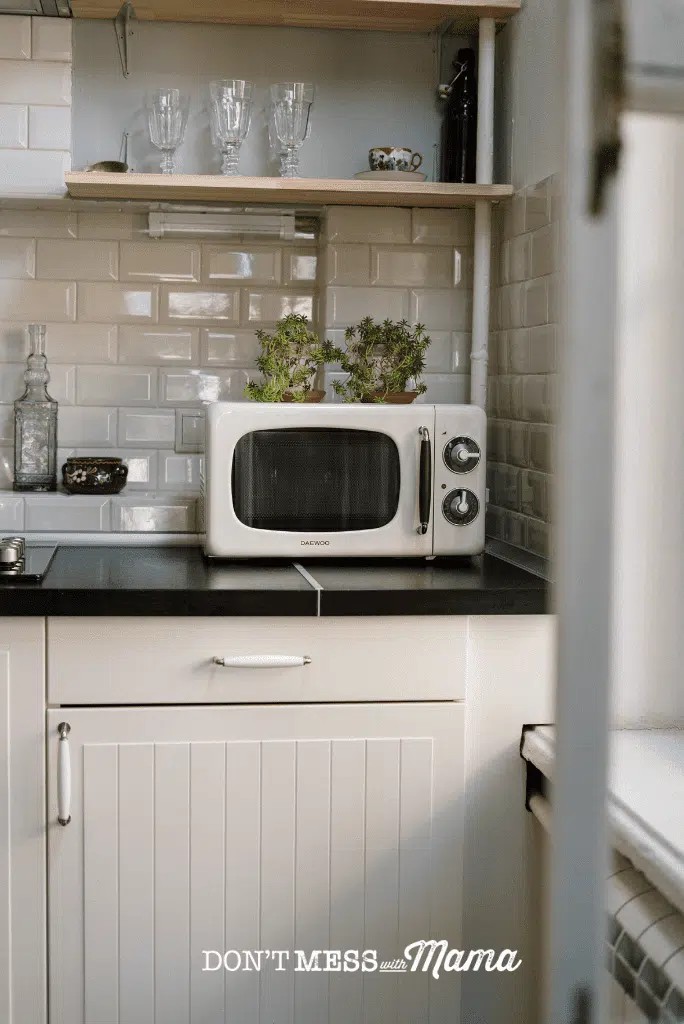Tired of the microwave and looking for alternative ways to reheat your favorite leftovers? You’re not alone! Many are ditching the microwave for various reasons. This guide provides nine effective methods on How To Heat Food Without A Microwave, ensuring your meals taste just as delicious as they did when freshly prepared.
Why Consider Microwave Alternatives?
While convenient, microwaves have drawbacks. Choosing other methods to reheat food offers several advantages:
- Enhanced Safety: Microwaves can heat food unevenly, creating potentially dangerous hot spots. Alternative methods provide more consistent heating, reducing the risk of burns.
- Improved Nutrition: Microwaving can deplete the nutritional value of food, diminishing essential vitamins and antioxidants. Other heating methods help preserve these vital nutrients.
- Better Taste and Texture: Foods often taste better and retain their original texture when reheated using methods other than a microwave.
- Space Saving: Microwaves are bulky and take up valuable counter space. Removing it can declutter your kitchen and improve its appearance.
Food Safety First: Reheating Guidelines
Before diving into the methods, it’s crucial to understand food safety guidelines. According to the USDA, here are the recommended temperatures for reheating leftovers:
- Reheated Cooked & Refrigerated Foods: Reach an internal temperature of at least 165°F (74°C).
- Commercially Vacuum-Sealed or Ready-to-Eat Foods: Heat to at least 140°F (60°C).
- Sauces, Soups, and Gravies: Reheat until they reach a boil.
- Oven, Toaster Oven, or Air Fryer: Set the temperature to at least 325°F (163°C) and ensure the internal temperature reaches 165°F (74°C).
- Avoid Slow Cookers for Reheating: They may not maintain a safe temperature above 140°F (60°C), increasing the risk of bacterial growth.
9 Effective Methods: How to Heat Food Without a Microwave
Here are nine proven ways to reheat food without relying on a microwave, ensuring delicious and safe results:
1. Stove Top: The Classic Approach
The stovetop is a versatile option for many foods. For liquids like soups, stews, pasta sauces, and rice, add a splash of water or broth to the pan or pot. Cover with a lid and heat over medium-low heat to create steam, which will help warm the food evenly.
For solid foods like roasted meats, vegetables, or stir-fries, use a little oil (such as avocado oil, olive oil, or butter) instead of water. Cover the pan and heat over low to medium heat. The lid will trap the heat, cooking the food from the inside out. The stove top is an excellent method on how to heat meat without a microwave.
For pizza, reheat slices on a cast iron or stainless steel skillet over medium heat until the bottom becomes crispy. Then, add a few drops of water to the pan (avoiding the pizza) and cover with a lid. Reduce the heat to low and let it steam for about a minute. This will create pizza that tastes as fresh as if it came straight from the oven, with a crispy bottom and a soft top.
2. Hot Stone Bowl: Korean-Style Reheating
A hot stone bowl (dolsot) is an excellent way to reheat food while keeping it warm for an extended period. Popular in Korean cuisine, this method is ideal for dishes like bibimbap. Spray the inside of the bowl with cooking spray, add your food (rice, pasta, meat, etc.), cover with a lid, and heat over low to medium heat. Stir occasionally to prevent sticking, and add a little water for steam. Once heated, remove the bowl from the stove, place it on a trivet, and eat directly from it.
3. Double Boiler: Gentle and Even Heating
A double boiler is perfect for delicate foods like chocolate, custards, sauces, and oatmeal. It consists of two pots stacked on top of each other, with water in the bottom pot and food in the top pot. Because the food isn’t directly exposed to the heat source, it warms gently and evenly, preventing burning.
This method is also great for grains such as rice and pasta, stewed meat, mashed potatoes, or vegetables that tend to dry out during reheating. Place the food in a heat-safe container (like a Mason jar), set it on a trivet inside the top pot, and cover with a lid. Heat over medium heat to create steam.
4. Double Boiler in an Instant Pot: Convenient Steaming
You can also use an Instant Pot as a double boiler. Add 1 cup of water to the inner pot, place a metal trivet on the bottom, and put the food in a heat-safe container on the trivet. Seal the lid, lock the steam vent, and set to high pressure for 5 minutes. Perform a quick release to vent the steam.
The Instant Pot’s Saute function works like a stovetop for reheating food, while the Pressure Cook function uses pressure and steam for frozen leftovers or dishes needing more cooking time.
5. Steam: Preserve Moisture and Nutrients
Steaming is an excellent method for reheating rice, quinoa, pasta, and vegetables without sauce, as it preserves the food’s fiber, texture, and flavor. Steam adds moisture, preventing food from drying out, and it helps retain nutrients.
Add 1 cup of water to a large pot. Place the food in a stainless steel basket or colander that fits inside the pot, and cover with a lid. Boil the water over low-medium heat to create steam. You can also use a metal trivet with a stainless steel or bamboo steamer basket.
6. Toaster Oven: Crispy Results
A toaster oven is perfect for reheating pizza, casseroles, burgers, French fries, and anything with a crust. Place the food on a tray that fits the toaster oven and set the temperature to 300-350°F (150-175°C) for 3-5 minutes. For extra crispiness, broil for an additional minute or two.
7. Broil in the Oven: Quick and Efficient
Similar to a toaster oven, broiling works well for pizza, French fries, grilled meat, and casserole dishes. Set the oven to a high heat (400-425°F or 200-220°C) or broil. Place the food on a baking sheet or oven-safe container on the top rack and heat for 3-5 minutes, turning as needed.
For casseroles, cover the dish and place it in the oven at a lower setting (375-400°F or 190-200°C) for 15-20 minutes, or until heated through.
8. Air Fryer: Crispy on the Outside, Tender Inside
The air fryer is ideal for reheating pizza, fried foods, steak, BBQ ribs, chicken nuggets, chicken wings, and baked potatoes. Pre-heat the air fryer to 400°F (200°C) for 5 minutes. Spray the basket with cooking spray, place the food inside, and reduce the temperature to 350°F (175°C). Reheat for 3-4 minutes, adding another 1-2 minutes if necessary.
9. Rice Cooker: Perfect for Grains
If you have a rice cooker, it’s great for reheating leftover rice and grains like oatmeal. Add 1 tablespoon of water for each cup of rice or grain and press the “On” or “Cook” button. The rice cooker will heat the food to around 200°F (93°C) and switch to the “Warm” function once the water has evaporated, preventing burning.
Tips & Tricks for Reheating Success
- Use a food thermometer: Ensure food is heated to a safe internal temperature. Beef, pork, eggs, and seafood should reach 145°F (63°C), while chicken and casseroles should reach 165°F (74°C).
- Crispy vs. Moist: Use stovetop, oven, air fryer, or toaster oven for foods that should be crispy. Reheat foods needing moisture (like pasta) with steam or a double boiler.
- Batch Cooking: Consider making foods in bulk and freezing them to reheat later, saving time and money.
Embrace Microwave-Free Reheating
With these nine simple methods, you can confidently ditch the microwave and enjoy delicious, safely reheated meals. Experiment with these techniques to discover your preferred ways on how to heat food without a microwave and elevate your culinary experience!

